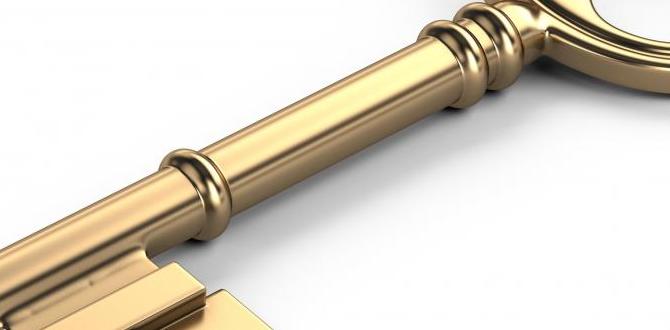Quick Summary: Getting the right replacement battery for your Canon camera is crucial for uninterrupted photography. This guide helps you find the exact match, understand compatibility, and keep your camera powered up for every shot. We’ll make it simple, safe, and stress-free.
Replacement Battery for Canon Camera: Essential Power for Every Shot
Is your Canon camera battery always dying at the worst possible moment? It’s a common frustration for photographers, from hobbyists to pros. Missing that perfect shot because your battery gave out is a real bummer. But don’t worry, finding and replacing your Canon camera battery doesn’t have to be complicated. We’re here to guide you through it, step-by-step, so you can get back to capturing those memories without interruption.
This article will help you identify the correct battery for your specific Canon model, understand the differences between genuine and third-party options, learn how to safely swap out your old battery, and share tips to keep your new battery running strong.
Why Your Canon Camera Battery Matters
Your camera’s battery is its heart. It’s what gives your camera life, allowing you to shoot photos and videos wherever you go. When the battery starts to fade, it can affect camera performance, sometimes even leading to unexpected shutdowns or errors. A fresh, reliable battery means peace of mind and more opportunities to capture what you love.
Think of it like the battery in your phone or even a car battery. When it’s topped up and healthy, everything works smoothly. When it’s not, things get tricky. For cameras, this means not just a lack of power, but potentially corrupted file saves or even damage to sensitive electronics if a faulty battery malfunctions.
Identifying the Right Replacement Battery
The most important part of replacing your Canon camera battery is finding the exact model your camera needs. Canon uses different battery types for different camera series and models. Using the wrong battery can be ineffective, or worse, it could damage your camera.
Where to Find Your Camera’s Battery Information
Here are the easiest ways to figure out which battery you need:
- Your Camera’s Manual: This is always the best place to start. The manual will list the specific Canon battery part number (usually starting with ‘LP-E’ or ‘NB-‘) required for your model.
- Canon’s Official Website: Visit the support section for your specific camera model on canon.com. They usually have detailed specifications, including the battery type.
- The Old Battery Itself: If you have the current battery, look for a part number printed on it. This is usually the easiest and most direct way to identify the replacement.
- Online Retailers: Websites like Amazon, B&H Photo, or Adorama will have detailed compatibility lists if you search for your camera model.
Common Canon Battery Series
Canon has several main battery series. Knowing which one you have is half the battle:
- LP-E Series: These are very common in Canon’s digital cameras, found in both entry-level and professional models. Examples include LP-E6/LP-E6N (popular in EOS DSLRs and mirrorless), LP-E8 (older Rebels), and LP-E17 (entry-level mirrorless and DSLRs).
- NB- Series: Often found in compact PowerShot cameras and some older digital models. Examples include NB-11L, NB-6L, and NB-13L.
- BP-Series: Typically used in older, larger camcorders or professional video cameras.
For instance, if you own a Canon EOS 5D Mark IV camera, you’ll need an LP-E6N or an LP-E6 battery.
Genuine Canon Batteries vs. Third-Party Options
When it comes to replacement batteries, you have two main choices: genuine Canon batteries or batteries from third-party manufacturers.
Genuine Canon Batteries
- Pros:
- Guaranteed compatibility and performance.
- Built to Canon’s exact specifications, ensuring safety and longevity.
- Often come with a manufacturer’s warranty.
- Reliable power output and charging cycles.
- Cons:
- More expensive than third-party options.
Third-Party Batteries
- Pros:
- Significantly cheaper than genuine Canon batteries.
- Can be a good option for casual users or as a backup battery.
- Cons:
- Quality can vary greatly between brands. Some are excellent, others are poor.
- May not offer the same capacity or lifespan as genuine batteries.
- Potential for compatibility issues; some cameras might not recognize them.
- Lower-quality batteries could pose safety risks (overheating, swelling) if not manufactured to high standards.
- May not have the same intelligent charging or power management features.
Our Recommendation: For critical shoots or if you depend heavily on your camera, investing in a genuine Canon battery is usually the safest and most reliable choice. For a backup battery or for less frequent use, a reputable third-party brand with good reviews can be a good value. Always research the third-party brand thoroughly. For more insights into battery technology and safety, resources like the U.S. Department of Energy offer valuable information on battery efficiency and care.
How to Replace Your Canon Camera Battery
Replacing your Canon camera battery is typically a straightforward process. Safety first, though! Always ensure your camera is turned OFF before attempting to change the battery.
Tools You Might Need
In most cases, you won’t need any tools. However, for very old models or if the battery compartment door is stiff, you might find these helpful:
- A clean, soft cloth to wipe the battery contacts.
- A very small, flathead screwdriver (only if the battery is stuck, which is rare).
Step-by-Step Replacement Guide
Follow these steps carefully:
- Turn Off Your Camera: Make absolutely sure your camera is completely powered down.
- Locate the Battery Compartment: On most Canon cameras, the battery compartment is on the bottom of the camera body. It usually has a small latch or door that slides open.
- Open the Battery Compartment Door: Slide the latch and gently lift or slide the door open. Be careful not to force it.
- Identify the Battery Latch: Inside the compartment, you’ll see the battery. Next to it, there’s usually a small plastic tab or lever. This is the battery release mechanism.
- Release the Old Battery: Gently push this release latch in the direction indicated (often towards the battery itself or sideways). This will slightly push the battery out of its slot.
- Remove the Old Battery: Once released, you should be able to slide the old battery out of the compartment. If it feels stuck, don’t pull hard; check that the latch is fully engaged.
- Insert the New Battery: Align the new battery with the compartment so the contacts on the battery match the contacts inside the camera. Batteries are shaped to fit only one way. Gently slide the new battery into the slot until it clicks into place. Ensure the release latch moves back to secure it.
- Close the Battery Compartment Door: Gently close the compartment door until it snaps shut. Make sure it’s fully closed and latched.
- Turn On Your Camera: Power on your camera. It should now recognize the new battery. The battery level indicator should show a full charge or close to it.
Special Considerations
Some higher-end Canon cameras or camcorders might have different battery arrangements (e.g., side-loading). Always refer to your camera’s manual if you’re unsure. Also, if your older battery swelled up, handle it with extreme care, as it might be damaged. Dispose of it properly.
Caring for Your New Canon Camera Battery
To get the most out of your new battery and ensure its longevity, follow these simple care tips:
Charging Best Practices
- Use the Official Charger: Always use the Canon-branded charger that came with your camera or an official Canon replacement charger. Third-party chargers might not provide the correct voltage or charging profile, potentially damaging the battery or charger.
- Avoid Overcharging: Most modern batteries and chargers have intelligent cutoff systems, but it’s still good practice not to leave a fully charged battery in the charger for extended periods (days or weeks).
- Charge in Moderate Temperatures: Batteries degrade faster in extreme heat or cold. Charge your battery at room temperature (around 20-25°C or 68-77°F).
- Charge Before Long Storage: If you plan to store your camera for a while, charge the battery to about 50-70% and remove it from the camera. This prevents complete discharge, which can damage the battery.
Everyday Usage Tips
- Battery Temperature: Avoid using or charging your camera in extreme heat or freezing temperatures. This is harsh on the battery.
- Power Down Completely: Always turn your camera off when not actively shooting for a short period. Leaving it in standby mode can drain the battery faster than you might think.
- Check Battery Contacts: Occasionally, gently wipe the metal contacts on the battery and inside the camera’s battery compartment with a clean, dry, lint-free cloth. This ensures good electrical connection.
- Firmware Updates: Keep your camera’s firmware updated. Sometimes, updates can improve battery management and efficiency.
Choosing the Right Battery Capacity (mAh)
When looking at batteries, especially third-party ones, you’ll see a specification called mAh. This stands for milliampere-hour and indicates the battery’s capacity – essentially, how much energy it can store.
Higher mAh = Longer Runtime
A battery with a higher mAh rating will generally last longer on a single charge than a battery with a lower mAh rating, assuming it’s the same voltage and chemistry. For example, an LP-E6N battery with 1865 mAh will typically last longer than an LP-E6 with 1500 mAh.
What to Look For:
- Match or Exceed Original Specs: If your original Canon battery was, say, 1200 mAh, a replacement of 1300 mAh or 1500 mAh might offer better performance.
- Reputable Brands: With third-party batteries, a higher mAh is appealing, but ensure the brand is known for quality. Overstating mAh capacity is a common trick for low-quality batteries.
- Camera Compatibility: Ensure the mAh rating doesn’t affect how the camera reports battery life. Some cameras might not accurately display the charge level of significantly higher-capacity third-party batteries.
Battery Recycling and Disposal
When your camera battery reaches the end of its life, it’s important to dispose of it responsibly. Lithium-ion batteries (most modern camera batteries) contain chemicals that can be harmful to the environment if thrown in regular trash. They can also be a fire hazard.
Safe Disposal Methods
- Electronics Recycling Centers: Many local recycling centers have specific drop-off points for rechargeable batteries and electronics.
- Retail Take-Back Programs: Some electronics stores or battery retailers offer battery recycling programs.
- Camera Stores: Your local camera shop might have a recycling program or can point you to one.
- Local Government Resources: Check your city or county’s waste management website for hazardous waste disposal days or permanent drop-off locations.
Never throw batteries in your household garbage bin. For more information on battery recycling, you can often find resources from organizations like Call2Recycle.
Frequently Asked Questions (FAQ)
What happens if I use a non-Canon battery?
Using a third-party battery can be fine, but there’s a risk. Your camera might not recognize it, it might not hold a charge as long, or in rare cases, a low-quality battery could potentially cause damage or be a safety hazard. Always buy from reputable brands if not going genuine.
How long should a Canon camera battery last?
A genuine Canon camera battery, when well-cared for, can last several years and hundreds of charge cycles. Actual usage time on a single charge depends heavily on your camera model, how you use it (e.g., LCD screen brightness, video recording), and ambient temperature.
Can I use an older model Canon battery in a newer camera?
Generally, no. Battery models are specific to camera series. An LP-E6 battery might work in a camera designed for LP-E6N, as it’s backward compatible, but an older NB- series battery will not fit or work in a camera requiring an LP-E series battery.
My camera shows ‘Battery Error’ with a new battery. What should I do?
This often means the camera isn’t recognizing the battery. Ensure it’s the correct model, inserted correctly, and fully seated. If it’s a third-party battery, try a genuine Canon one to see if that resolves the issue. There might also be dirt on the contacts.
Is it okay to leave my camera battery on the charger overnight?
Modern smart chargers stop charging once the battery is full to prevent overcharging. While it’s generally safe, it’s best practice not to leave batteries plugged in for exceptionally long periods (weeks) to maximize their lifespan. A few hours is usually fine.
Where can I buy genuine Canon camera batteries?
You can buy them directly from Canon’s official website, authorized Canon dealers like B&H Photo Video, Calumet Photo, or Adorama, and reputable electronics retailers such as Amazon (ensure it’s sold by Amazon or a trusted seller, not a random third-party). Avoid unverified online sellers.
How do I know if my camera battery is dead?
The battery indicator on your camera screen will likely show empty or a low percentage. Your camera might also shut down unexpectedly, refuse to power on, or display a warning message. Batteries degrade over time; if it no longer holds a charge for a reasonable amount of shooting, it’s likely time for a replacement.
Conclusion
Keeping your Canon camera powered up is essential for capturing life’s moments without missing a beat. By understanding how to identify the correct replacement battery, choosing wisely between genuine and third-party options, and adopting good battery care habits, you can ensure your camera is always ready when inspiration strikes. Remember to consult your camera manual for specific details, prioritize safety, and opt for reputable sources when purchasing to avoid potential issues. Now go forth and shoot with confidence, knowing your power source is reliable!




